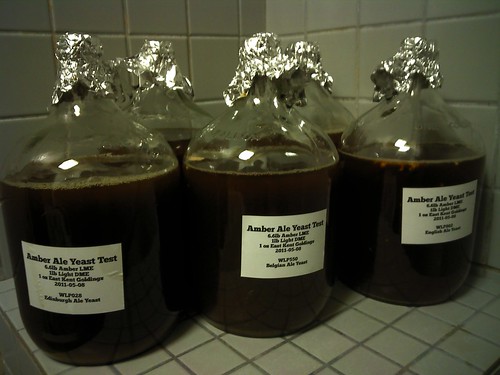jwynia
Well-Known Member
In order to get a better understanding of what exact flavors several yeasts produce, I was thinking of splitting a batch into 5 x 1 gallon jugs for fermentation, each with a different yeast. Depending on the results, I am thinking about running this experiment several times to get a feel for a bunch of different yeasts (would really like to understand most of what White Labs and Wyeast are selling).
Because I want to be sure I'm comparing fairly, I'm looking for what I should use as my base wort. My first inclination is to just use some amber LME and, say, 1 oz of East Kent Goldings for bittering.
Given the variety of those yeasts, is that a reasonable base wort to try? Should I go with something lighter? A more neutral hop? A completely different approach because I'm on crack?
Because I want to be sure I'm comparing fairly, I'm looking for what I should use as my base wort. My first inclination is to just use some amber LME and, say, 1 oz of East Kent Goldings for bittering.
Given the variety of those yeasts, is that a reasonable base wort to try? Should I go with something lighter? A more neutral hop? A completely different approach because I'm on crack?



